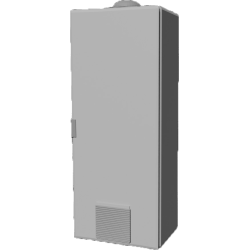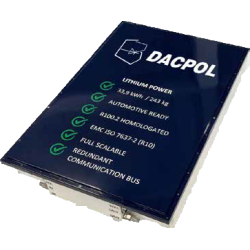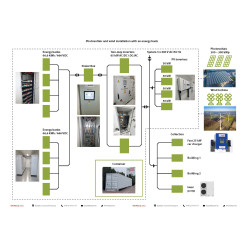Debes estar logueado
-
WróćX
-
Componentes
-
-
Category
-
Semiconductores
- Diodos
- Tiristores
-
Módulos con aislamiento eléctrico
- Módulos con aislamiento eléctrico | VISHAY (IR)
- Módulos con aislamiento eléctrico | INFINEON (EUPEC)
- Módulos con aislamiento eléctrico | Semikron
- Módulos con aislamiento eléctrico | POWEREX
- Módulos con aislamiento eléctrico | IXYS
- Módulos con aislamiento eléctrico | POSEICO
- Módulos con aislamiento eléctrico | ABB
- Módulos con aislamiento eléctrico | TECHSEM
- Przejdź do podkategorii
- Rectificadores de puente
-
Transistores
- Transistores | GeneSiC
- Módulos SiC MOSFET | Mitsubishi
- Módulos SiC MOSFET | STARPOWER
- Módulos ABB SiC MOSFET
- Módulos IGBT | MITSUBISHI
- Módulos de transistores | MITSUBISHI
- Módulos MOSFET | MITSUBISHI
- Módulos de transistores | ABB
- Módulos IGBT | POWEREX
- Módulos IGBT | INFINEON (EUPEC)
- Elementos semiconductores de carburo de silicio (SiC)
- Przejdź do podkategorii
- Controladores de puerta
- Bloques de energía
- Przejdź do podkategorii
- Convertidores de corriente y tensión LEM
-
Componentes pasivos (condensadores, resistencias, fusibles, filtros)
- Resistencias
-
Fusibles
- Fusibles miniatura para circuitos electrónicos, serie ABC y AGC
- Fusibles tubulares de acción rápida
- Eslabones fusibles de retardo de tiempo con características GL / GG y AM
- Eslabones fusibles ultrarrápidos
- Fusibles de acción rápida (estándar británico y estadounidense)
- Fusibles de acción rápida (estándar europeo)
- Fusibles de tracción
- Eslabones fusibles de alto voltaje
- Przejdź do podkategorii
-
Condensadores
- Condensadores de motor
- Condensadores electrolíticos
- Condensadores de película
- Condensadores de potencia
- Condensadores para circuitos de CC
- Condensadores de corrección del factor de potencia
- Condensadores de alto voltaje
- Condensadores de calentamiento por inducción
- Condensadores de almacenamiento de energía y pulsos
- Condensadores de ENLACE CC
- Condensadores para circuitos AC/DC
- Przejdź do podkategorii
- Filtros EMI
- Supercondensadores
- Protección contra sobretensiones
- Filtros para detección de emisiones TEMPEST
- Pararrayos
- Przejdź do podkategorii
-
Relés y contactores
- Teoría de relés y contactores
- Relés semiconductores de CA trifásicos
- Relés semiconductores de CA trifásicos
- Reguladores, controles y accesorios
- Arranques suaves y contactores de inversión
- Relés electromecánicos
- Contactores
- Interruptores giratorios
-
Relés semiconductores de CA monofásicos
- Relés semiconductores CA monofásicos, serie 1 | D2425 | D2450
- Relés semiconductores CA monofásicos, series CWA y CWD
- Relés semiconductores CA monofásicos de las series CMRA y CMRD
- Relés semiconductores de CA monofásicos, serie PS
- Relés semiconductores de CA dobles y cuádruples, serie D24 D, TD24 Q, H12D48 D
- Relés de estado sólido monofásicos, serie gn
- Relés semiconductores de ca monofásicos, serie ckr
- Relés AC monofásicos SERIE ERDA Y ERAA para carril DIN
- Relés AC monofásicos para corriente 150A
- Relés dobles de estado sólido integrados con disipador de calor para carril DIN
- Przejdź do podkategorii
- Relés semiconductores CA monofásicos para PCB
- Relés de interfaz
- Przejdź do podkategorii
- Núcleos y otros componentes inductivos
- Radiadores, varistores, protecciones térmicas
- Aficionados
- Aire Acondicionado, Accesorios para Armarios Eléctricos, Neveras
-
Baterías, cargadores, fuentes de alimentación de búfer e inversores
- Baterías, cargadores - descripción teórica
- Baterías de iones de litio. Baterías personalizadas. Sistema de gestión de batería (BMS)
- Pilas
- Cargadores de baterías y accesorios
- Fuente de alimentación de respaldo de UPS y fuentes de alimentación de búfer
- Convertidores y accesorios para fotovoltaica
- Almacen de energia
- Celdas de combustible
- Baterías de iones de litio
- Przejdź do podkategorii
-
Automaticas
- Elevadores Spiralift
- Piezas para drones Futaba
- Finales de carrera, microinterruptores
- Sensores, transductores
- Pirometría
- Contadores, temporizadores, medidores de panel
- Dispositivos de protección industrial
- Señalización luminosa y sonora
- Cámara termográfica
- Pantallas LED
- Botones e interruptores
- Przejdź do podkategorii
-
Cables, alambres Litz, conductos, conexiones flexibles
- alambres
- Pasamuros y acopladores de cables
- cables Litz
-
Cables para aplicaciones especiales
- Los cables de extensión y compensación
- Cables para termopares
- Los cables de conexión a PT czyjnków
- Multicore cables temp. -60 ° C a + 1400 ° C
- cables de media tensión SILICOUL
- ignición alambres
- Los cables calefactores
- temp núcleo único. -60 ° C a + 450 ° C
- conductores de trenes
- El calentamiento de los cables en el Ex
- Przejdź do podkategorii
- camisas
-
trenzas
- trenzas planas
- trenzas ronda
- trenza muy flexible - plana
- trenza muy flexible - Ronda
- Copper cilíndrico trenzado
- Copper protector de la trenza y cilíndrica
- cintas de conexión flexibles
- Trenzas cilíndrico galvanizado y acero inoxidable
- Aislamiento de PVC trenzas de cobre - Temperatura 85 ° C
- aluminio trenzado plano
- Kit de conexión - trenzas y tubos
- Przejdź do podkategorii
- Accesorios para la tracción
- Terminales de cable
- barras flexibles aisladas
- carril flexible multicapa
- sistemas de gestión de cables
- Przejdź do podkategorii
- Zobacz wszystkie kategorie
-
Semiconductores
-
-
- Suppliers
-
Applications
- Accionamientos de CA y CC (inversores)
- Automatización HVAC
- Automatización industrial
- Automatización industrial
- Calentamiento por inducción
- Componentes para atmósferas potencialmente explosivas (EX)
- Dispositivos de protección industrial
- Energy bank
- Equipos para Armarios de Distribución, Control y Telecomunicaciones
- Fuentes de alimentación (UPS) y sistemas rectificadores
- Impresión
- Máquinas de soldar y máquinas de soldar
- Máquinas herramientas CNC
- Máquinas para secar y procesar madera
- Máquinas para termoformado de plásticos
- Medición y regulación de temperatura
- Medición y regulación de temperatura
- Minería, metalurgia y fundación
- Motores y transformadores
- Tracción de tranvía y ferrocarril
-
Instalación
-
-
Inductores
-
-
Dispositivos de inducción
-
-
Servicio
-
- Contact
- Zobacz wszystkie kategorie
Almacen de energia
Electrochemical batteries, i.e. accumulators, allow for storing energy in an easier to restore form. An advantage of accumulators is their high value of energy density parameter. Energy density is a unit amount of gathered electric energy, which can be presented...
Electrochemical batteries, i.e. accumulators, allow for storing energy in an easier to restore form. An...
| Imagen | Ver el producto | Fabricante no | ||||
|---|---|---|---|---|---|---|
| -- |

|
DACPOL | HOGAR ALMACEN DE ENERGIA ESS | MÍRALO | -- | On Order |
| picture_as_pdf |

|
DACPOL | ENERGY STORAGE NMC | MÍRALO | -- | On Order |
| picture_as_pdf |

|
DACPOL | ENERGY STORAGE LFP | MÍRALO | -- | On Order |
| picture_as_pdf |

|
DACPOL | Battery Pack for Vehicles | MÍRALO | -- | On Order |
| picture_as_pdf |

|
DACPOL | Photovoltaic and wind installation with an energy bank | MÍRALO | -- | On Order |
| picture_as_pdf |

|
TAB | Módulo TAB e.module L5.1 48V | MÍRALO | 1026194 | On Order |
Electrochemical batteries, i.e. accumulators, allow for storing energy in an easier to restore form. An advantage of accumulators is their high value of energy density parameter. Energy density is a unit amount of gathered electric energy, which can be presented volumetrically or in mass. A disadvantage of using accumulators is their self-discharge, use of the accumulator that presents itself in change of parameters - i.e. battery aging, long charging time, effect of temperature on the accumulator, and, in case of some technical solutions, short durability time.
In solutions used in energy storages, two types of batteries are used: acid-lead and lithium-ion.
Acid-lead batteries achieve efficiency of 70%. They are relatively cheap, with a simple charging system and the possibility of short overload with high currents, that is why they're used in UPS. Their key flaw is short durability (1000 cycles charge-discharge) and their construction. In acid-lead batteries the electrolyte is in a liquid form, which can cause leakage, and this creates the need to refill the electrolyte. To eliminate this issue acid-lead batteries are made as autonomous:
- SLA – Sealed Lead Acid
- VRLA – Valve Regulated Lead–Acid
They are produced in two technologies:
- Gel batteries, in which water solution of sulfuric acid mixed with silica has a form of a gel and plays a role of an electrolyte. However, this solution has one flaw - limits discharging with high currents, which makes them rarely used in high-power systems.
- AGM batteries (Absorbed Glass Mat), in which the electrolyte is absorbed in a separator made of a porous glass mass.
Li-ion batteries achieve efficiency of 94%. These cells are one of the lightest, thus they’re used in electronics and recently in electric cars. Batteries used in electric cars are more durable (durability on a level reaching up to several dozens of years, which as charging cycles can reach up to 1800 charge-discharge cycles) than their electronic equivalents, and are equipped with cooling and heating systems. These cells can be quickly changed from 0 to 80% in 15–30 minutes without a significant effect on their durability. Due to achievements in electromobility, it is considered to use li-ion batteries as stationary energy storage in renewable energy installations, which are characterized by irregular and unstable work.
Ni-metal-hydrogenic batteries (NiMH) achieve efficiency up to 92%, with durability up to 2000 charge-discharge cycles. The most important benefit of these cells is that they do not contain toxic cadmium. These cells are characterized by high density of energy, capacity and lowered memory effect. Their disadvantage is a lack of possibility to give back big currents. NiHM batteries are susceptible for self-discharge, but the producers are still developing the technology and trying to decrease this effect.
Passive power compensation while using power banks
UPS is used for charging important receivers in case of network disappearance in the network or protecting sensitive elements from disruptions.
Because capacitors are installed in UPS, active power and capacity passive energy is loaded from the network. Additionally, in modern constructions PFC systems are used, which allow for limiting harmonic values and thus lowering passive energy charging. This solution increases the power rate cosφ with a full load. Another solution is using a phase pose in the input perimeter, causing capacity input power to be led to 0.
Construction of electric power storage
In terms of energy storage system we distinguish the following elements:
- two-way converter – DC/AC and AC/DC,
- battery storage – chemical battery accumulator,
- BMS battery controller,
- programmable controller – manages algorithms,
- GUI (Graphic User Interface) monitoring and visualization system – a tool for controlling storage system,
- support elements providing connection with network – measuring units of installation or separation transformer.
The element, which should be discussed is a two-way converter. It is a DC/AC and AC/DC converter, which task is to control charging process and battery discharge, and also energy exchange between electro-power network and storage. Converters provide proper voltage parameters and in case of eventual overload a proper top current. This system has to provide synchronous work with the network, and in case of a blackout should provide accumulator work. Additionally, the converter has to care about the battery, i.e. charging accordingly to the proper characteristics, to not overcharge it, prevent from overheating and protect from thermal fanning out process. The converter has to also communicate with the BMS and provide galvanic insulation through an output transformer.



